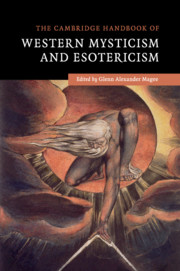Book contents
- Frontmatter
- Dedication
- Contents
- Acknowledgments
- Editor's Introduction
- List of contributors
- I ANTIQUITY
- II THE MIDDLE AGES
- III THE RENAISSANCE AND EARLY MODERNITY
- 12 Renaissance Hermetism
- 13 Christian Kabbalah
- 14 Paracelsianism
- 15 Rosicrucianism
- 16 Jacob Boehme and Christian Theosophy
- 17 Freemasonry
- 18 Swedenborg and Swedenborgianism
- 19 Mesmer and Animal Magnetism
- IV THE NINETEENTH CENTURY AND BEYOND
- V COMMON THREADS
- Suggestions for Further Reading
- Index
- References
15 - Rosicrucianism
from III - THE RENAISSANCE AND EARLY MODERNITY
Published online by Cambridge University Press: 05 May 2016
- Frontmatter
- Dedication
- Contents
- Acknowledgments
- Editor's Introduction
- List of contributors
- I ANTIQUITY
- II THE MIDDLE AGES
- III THE RENAISSANCE AND EARLY MODERNITY
- 12 Renaissance Hermetism
- 13 Christian Kabbalah
- 14 Paracelsianism
- 15 Rosicrucianism
- 16 Jacob Boehme and Christian Theosophy
- 17 Freemasonry
- 18 Swedenborg and Swedenborgianism
- 19 Mesmer and Animal Magnetism
- IV THE NINETEENTH CENTURY AND BEYOND
- V COMMON THREADS
- Suggestions for Further Reading
- Index
- References
Summary
Introduction: Gnosis and Transfiguration in Rosicrucianism
Disparate groups have assumed the Rosicrucian mantle across the four centuries of development of this esoteric current; consequently, the task of defining Rosicrucianism is a challenging one. In both scholarly and esoteric literature, Rosicrucianism has been portrayed as the purveyor of a gnosis originating in the ancient gnostic and hermetic milieu, that is to say, an esoteric knowledge promising salvation through the freeing of the spirit from its bondage to matter. The prevalence of this portrayal owes much to the thought of Carl Gustav Jung, who advanced the influential thesis that the alchemical art practiced in Rosicrucian circles was a conduit for such gnosis. Jung's view echoes a heterodox Protestant polemic of the seventeenth century, when the Pietist Gottfried Arnold sought to ally Rosicrucianism with the suppressed teachings of a supposedly authentic primitive church.
Gnosis is certainly a central motif in the modern construction (and postmodern deconstruction) of Western esotericism as a field of discourse formed by Christian apologetics. Nevertheless, there is little in pre-twentieth-century Rosicrucianism of the world-rejecting flight from matter or heavenly ascent through salvific knowledge that was central to ancient Gnosticism – which like esotericism is a problematic category with origins in a heresiological agenda. Prior to the rise of the neo-gnostic Lectorium Rosicrucianum in the 1930s, when the Demiurge emerged among the Neoplatonic cosmologies that were a staple of Rosicrucianism, he was the benevolent architect of Plato rather than the dark creator god of the gnostics. Nor is the presence in the Rosicrucian corpus of other motifs associated with ancient Gnosticism (such as the androgyne and the ouroboros) evidence of a lineage stretching back to antiquity via the gnostic heresy of the Cathars. Rather, these motifs are derived via Boehme and Paracelsus from the alchemical corpus, and their employment by the medieval alchemists cannot be considered proof of the secret practice of a heretical “spiritual alchemy.” Jung's references in this regard are not to a consciously transmitted tradition but to a largely unconscious process of collective individuation corresponding to the precession of the equinoxes. As the main conduit of the notion of Rosicrucianism's gnostic lineage, Jung's testimony on this matter must be carefully distinguished from a purely historical enquiry, lest we become unwitting purveyors of an esoteric tradition rather than agents for its historical analysis.
- Type
- Chapter
- Information
- The Cambridge Handbook of Western Mysticism and Esotericism , pp. 171 - 183Publisher: Cambridge University PressPrint publication year: 2016



